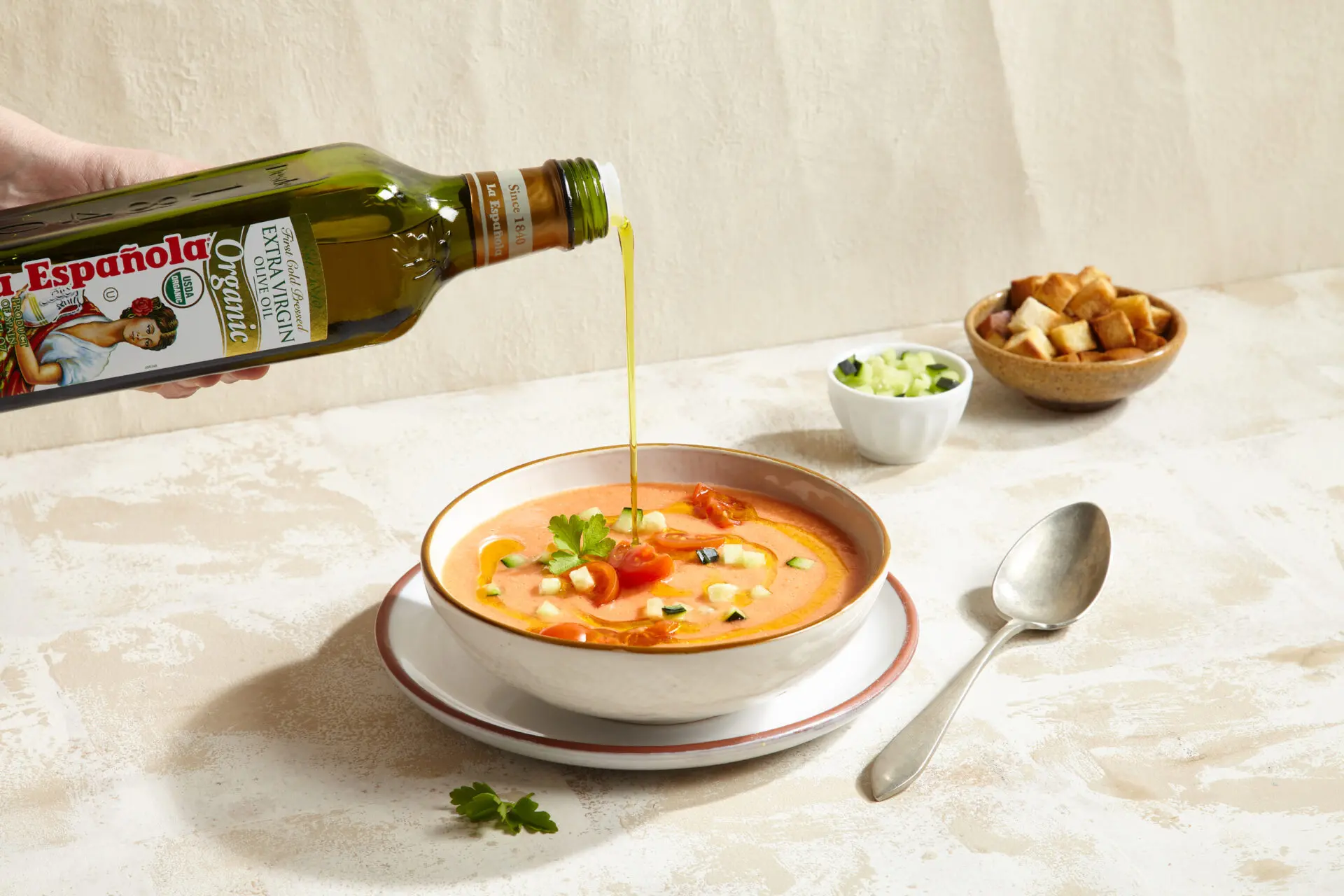There’s something timeless about a Spanish summer. The sun climbs high, the days stretch long, and fresh, vibrant produce fills the markets. With the heat comes a seasonal shift in the kitchen too – lighter meals, chilled drinks, and cold soups that refresh and revive. If you’ve spent time in southern Spain, you’ll know that salmorejo and gazpacho become part of the rhythm of the season.
Served as appetisers, light lunches, or even drinks, these tomato-based cold soups are true staples of Andalusian summer. Let’s take a closer look at what makes them special, how they differ, and how you can make them at home.
What Are Salmorejo and Gazpacho?
Both salmorejo and gazpacho hail from Andalusia and are cherished for their ability to cool you down while delivering bags of flavour. They share a few core ingredients—ripe tomatoes, stale bread, garlic, olive oil—but diverge in style, texture, and tradition. These soups aren’t just refreshing—they’re cultural snapshots of southern Spain: light, bold, and seasonal.
A Little History on Your Spoon
The roots of these soups lie in the kitchens of Spain’s south, where making use of stale bread and local produce became a summer kitchen staple.
Gazpacho likely began life as a humble peasant dish, evolving over centuries into the chilled vegetable soup we know today. Its blend of tomatoes, cucumber, peppers and garlic brilliantly captures the spirit of summer.
Salmorejo, which originated in Córdoba, started as a bread-and-garlic mash, with no tomatoes at all. It was shaped over time by historical influences—including Arabic culinary traditions—until it became the smooth, creamy soup that’s now considered in Spain a summer essential.
What’s the Difference?
Though they might look similar, salmorejo and gazpacho are quite distinct.
Salmorejo is thick and velvety, thanks to a generous amount of bread. Gazpacho is lighter and more fluid, often thinned with water or ice to give it a drinkable consistency.
Both begin with ripe tomatoes, but gazpacho includes extras like cucumber, green pepper, and onion, giving it a fresher, more vegetal profile. Salmorejo keeps things simple—just tomato, bread, garlic and olive oil.
Salmorejo is typically ladled into bowls and topped with hard-boiled egg and jamón serrano (Spanish cured ham). Gazpacho is often poured into glasses and enjoyed as a cooling drink or a starter.
Different as they are, both dishes celebrate the best of Andalusian produce—and both are made for hot days and easy living.
How to Make Classic Gazpacho

If you’re new to chilled Spanish soups, start with the traditional gazpacho. It’s simple, satisfying, and adaptable. Blend ripe tomatoes, peeled cucumber, green pepper, garlic, a splash of vinegar, and a pinch of salt. Finish with a swirl of La Española Extra Virgin Olive Oil, and serve well chilled.
In Spain, people often enjoy it straight from the fridge, poured into tumblers for a mid-morning refresher.
How to Make Classic Salmorejo

Salmorejo is richer and silkier—more of a starter than a sip. Blend ripe tomatoes with stale bread, garlic, olive oil, and a touch of salt until smooth. Adjust the thickness with a splash of water if needed.
Top with crumbled hard-boiled egg and strips of jamón ibérico or jamón serrano. A final drizzle of La Española Organic Extra Virgin Olive Oil adds the perfect finish.
Picking the Perfect Tomatoes
Tomatoes make the dish, so choose wisely. You want them ripe, sweet, and in season—think Roma, plum, or heirloom varieties. They should feel slightly soft to the touch and smell fragrant. Good tomatoes mean less need for seasoning and more flavour.
Blending Tips & Texture Tricks
Start by blending the tomatoes until smooth. Gradually add other ingredients like bread and olive oil.
For salmorejo, blending thoroughly creates a silky, lump-free texture. For gazpacho, you might prefer a lighter blend to retain some vegetable texture for added contrast.
If salmorejo is too thick, add cold water gradually while blending. If gazpacho feels too thin, a small piece of soaked bread can help thicken it without dulling the flavour.
Taste as you go.
Why Extra Virgin Olive Oil Matters
The olive oil you choose makes a real difference. La Española Extra Virgin Olive Oil adds fruitiness, body, and richness to both soups. It’s not just a garnish—it’s an essential part of the recipe.
It also comes with health perks: high in monounsaturated fats and antioxidants, extra virgin olive oil is linked to better heart health and is a great alternative to butter or refined oils.
Ready to Chill?
If you’re craving something seasonal, simple and satisfying, gazpacho and salmorejo are your summer go-tos. Packed with flavour, rooted in tradition, and finished with a generous swirl of Spanish olive oil, they’re as good on a weekday lunch menu as they are for a relaxed garden gathering.
For more Spanish-inspired recipes and tips, have a look at our blog.
